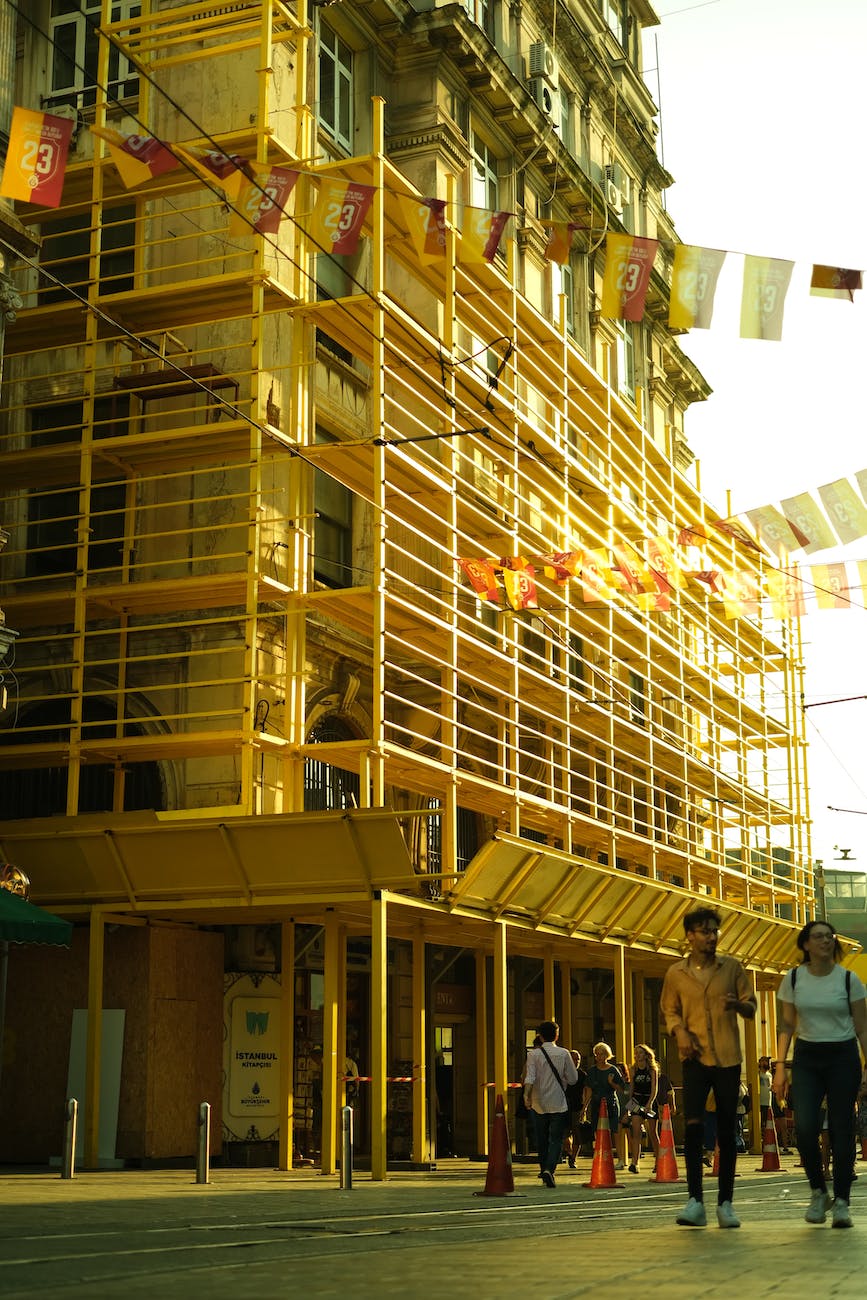
Types of Scaffolding: A Comprehensive Guide
Types of Scaffolding : Scaffolding is an essential tool in the construction industry, providing workers with a safe and stable platform to perform various tasks at different heights. This article explores the different types of scaffolding commonly used in construction projects, highlighting their features, benefits, and applications.
Introduction to Scaffolding
Scaffolding serves as a temporary structure that supports workers and materials during construction, maintenance, or repair projects. It ensures a secure working environment at elevated heights and facilitates the completion of tasks that would otherwise be challenging or unsafe.
Supported Scaffolding
Single Scaffolding
Single scaffolding, also known as bricklayer’s scaffolding, is commonly used for masonry work. It consists of vertical standards, putlogs, ledgers, and horizontal platforms. This type of scaffolding is simple to set up and is ideal for low-rise buildings.
Double Scaffolding
Double scaffolding, or mason’s scaffolding, is more robust and provides enhanced stability. It involves the use of two frames with gaps in between, allowing workers to access hard-to-reach areas. This type of scaffolding is often used for stone masonry.
Cantilever Scaffolding
Cantilever scaffolding relies on needles and projecting brackets that extend from the structure’s surface. It is particularly useful for working on facades or structures above water bodies. Engineers design this scaffolding type with careful calculations to ensure stability.
Suspended Scaffolding
Single-Point Suspended Scaffolding
Single-point suspended scaffolding involves a single rope that supports a platform. It’s commonly seen during maintenance tasks on tall structures like bridges or skyscrapers. Workers can easily adjust the platform’s height using a pulley system.
Multi-Point Suspended Scaffolding
Multi-point suspended scaffolding uses multiple ropes and pulleys to distribute weight evenly. This type is suitable for larger projects where a single rope wouldn’t provide sufficient stability. It’s commonly used for window cleaning, painting, and repairs on tall buildings.
Rolling Scaffolding
Rolling scaffolding, also known as mobile scaffolding, is equipped with wheels that allow easy movement. It’s a versatile option for projects requiring frequent repositioning. This type is commonly used in warehouses, factories, and large indoor spaces.
Trestle Scaffolding
Trestle scaffolding consists of movable tripods or ladders with horizontal planks. It’s a lightweight and portable option, often used for indoor projects or tasks with limited space. However, it’s important to ensure stability and prevent wobbling.
Steel Scaffolding
Steel scaffolding is known for its durability and strength. It’s highly resistant to weather conditions and can support heavy loads. This type is commonly used in large-scale construction projects like skyscrapers and bridges.
Patented Scaffolding
Patented scaffolding refers to pre-designed systems that are easy to assemble. They often come with integrated safety features and are preferred for their convenience. These scaffolds are popular in projects where efficiency and speed are crucial.
Bamboo Scaffolding
Bamboo scaffolding is commonly used in Asia and is known for its eco-friendliness and cost-effectiveness. It’s lightweight, easily available, and offers surprising strength. However, it’s limited to certain types of construction due to its specific properties.
Modular Scaffolding
Modular scaffolding is made up of standardized components that can be assembled in various configurations. It offers flexibility and is suitable for projects of different sizes and complexities.
Mobile Scaffolding
Mobile scaffolding is versatile and can be easily moved around the worksite. It’s often used for tasks that require access to multiple areas within a short timeframe.
Scaffolding Accessories
Various accessories enhance the functionality and safety of scaffolding systems. These include guardrails, toeboards, base plates, and couplers that securely connect different scaffold components.
Importance of Proper Scaffolding
Proper scaffolding is crucial for ensuring the safety of workers and the success of a construction project. Using the appropriate type of scaffolding, along with adherence to safety guidelines, minimizes the risk of accidents and ensures efficient progress.
Safety Measures for Scaffolding
Implementing safety measures such as proper training, regular inspections, and the use of personal protective equipment (PPE) is essential to prevent accidents and injuries on scaffolding. Fall protection, proper planking, and secure anchoring are key components of scaffolding safety.
Scaffolding Regulations and Standards
Government agencies and industry organizations establish regulations and standards to ensure the safe use of scaffolding. Compliance with these guidelines is mandatory to prevent accidents and legal liabilities.
Conclusion
In conclusion, scaffolding plays a pivotal role in the construction industry, providing workers with a secure platform to carry out tasks at various heights. The diverse types of scaffolding available cater to different project requirements, ensuring both safety and efficiency. Choosing the right type of scaffolding and adhering to safety protocols are essential for successful construction projects.
FAQs (Frequently Asked Questions)
- What is the purpose of scaffolding in construction? Scaffolding provides a safe working platform for construction workers at elevated heights, enabling them to perform tasks efficiently.
- Which type of scaffolding is best for high-rise buildings? For high-rise buildings, suspended scaffolding or steel scaffolding is often preferred due to their stability and load-bearing capacity.
- What is the primary difference between single and double scaffolding? The main difference lies in their stability and use cases. Double scaffolding is more stable and used for stone masonry, while single scaffolding is simpler and suitable for brickwork.
- Is bamboo scaffolding safe for all types of construction? Bamboo scaffolding is suitable for certain types of construction, such as low to mid-rise buildings, but it may not be ideal for heavy structures.
- Why is compliance with scaffolding regulations important? Compliance with regulations ensures the safety of workers and prevents accidents, leading to smoother construction processes and reduced legal risks.





















